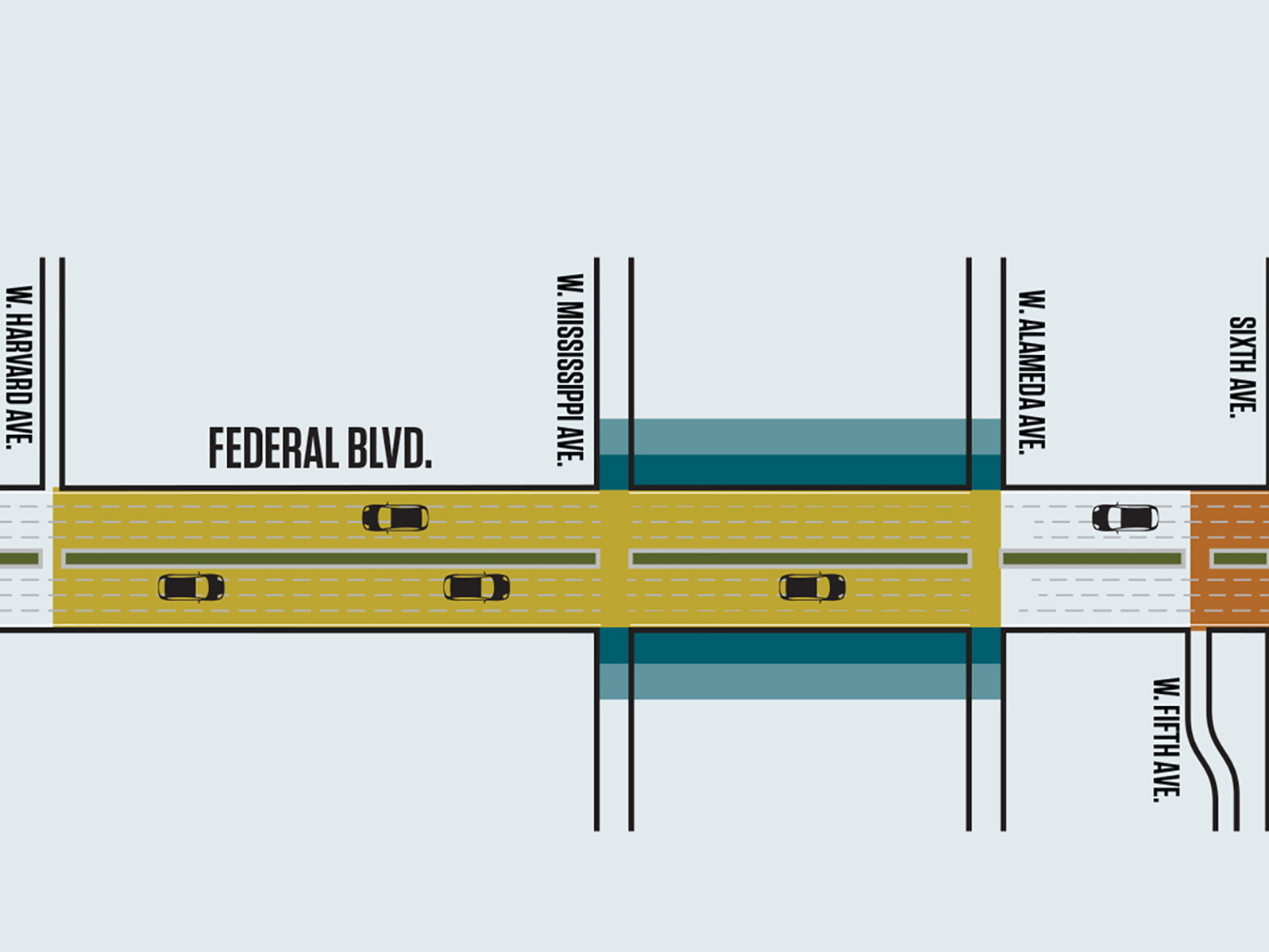The Local newsletter is your free, daily guide to life in Colorado. For locals, by locals.
A trip down Federal Boulevard treats motorists, bicyclists, and pedestrians to one of the most culturally diverse corridors in the city—and also one of the most dangerous. The nine-mile stretch from I-70 in the north to U.S. 285 in the south bears a fatality rate nearly three times higher than the average urban Colorado road. Over the next five years, however, 21 different projects will aim to make Federal more pleasant and much safer. Here, five of the initiatives designed to safeguard one of the region’s most vital arteries.
Giving Trees: W. Alameda Ave. to W. Mississippi Ave.
Currently, there are only 18 lonely trees on this one-mile stretch. The South Federal Green Boulevard project, a partnership between Denver Public Works (DPW) and the Colorado Department of Transportation (Federal is officially a state highway), will plant 100 more here starting spring of 2020. The tree line will create a barrier between cars and walkers as well as improve the quality of storm runoff.
Art And Soul: W. Alameda Ave. to W. Mississippi Ave.
In October 2018, WalkDenver and the West Denver Renaissance Collaborative launched the Friends of Little Saigon initiative. During a yearlong planning phase, the local organizations are asking residents how they’d like to see their area, populated largely by Vietnamese-owned businesses, beautified. To provide an example, this month WalkDenver will begin installing a mural that celebrates the heritage of Vietnamese citizens along Federal.
Pace Setting: I-70 to W. Colfax Ave.
Federal is wider than a typical city street, so traveling from one side of the crosswalk to the other before the “don’t walk” symbol flashes is a race many pedestrians can’t win. Late this year, the city and county’s Smart City initiative—which is testing technologies over a range of sectors—will install sensors at select intersections along the thoroughfare. These monitors will verify that pedestrians have made it safely across the road before permitting the light to change.
A Wider Berth: W. Howard Place to W. Fifth Ave.
DPW began the Federal Boulevard Improvements and Reconstruction face-lift this past summer. When construction ends early next year, one of the city’s most perilous places will have its sidewalks broadened to nearly nine feet, giving pedestrians more space between themselves and passing cars. Meanwhile, new 14-foot-wide medians (nothing separates north- and southbound traffic now) will add trees and barriers that, studies show, encourage motorists to drive with more caution.
Building Barriers: W. Alameda Ave. to W. Harvard Ave.
Physical boundaries keep drivers from careening across roadways. CDOT’s South Federal Boulevard Safety Improvements plan, which wraps up this fall, will add medians to almost three miles of the roadway. The cement barriers will strictly enforce where drivers can make turns, ensuring they stop using center turn lanes as their own personal expressways.









